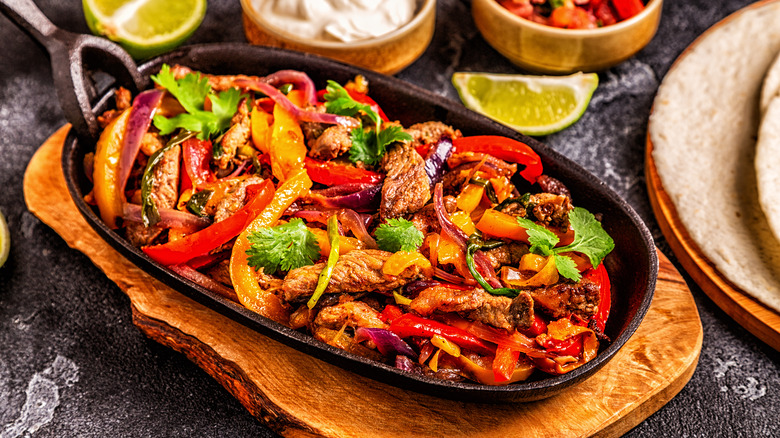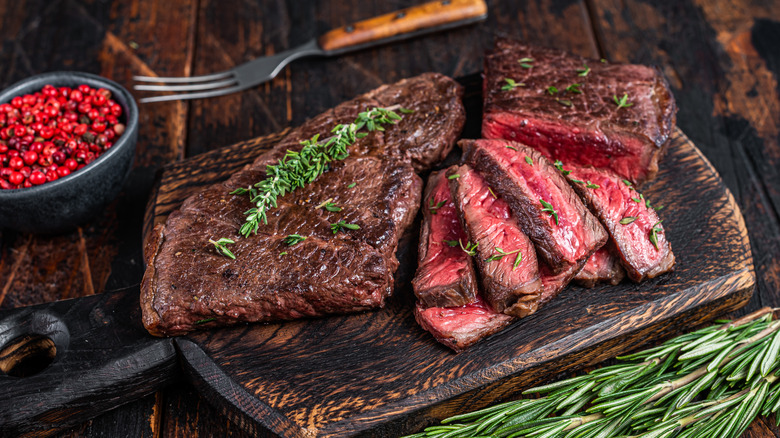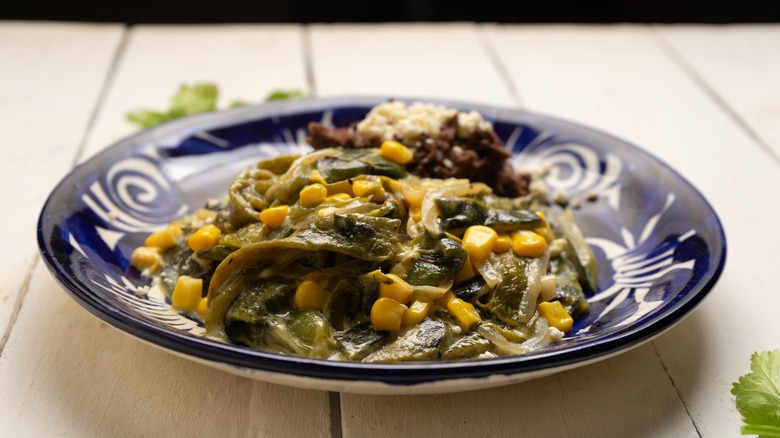What's The Difference Between Rajas And Fajitas?
As explained by History, Tex-Mex cuisine was first developed in the U.S. thanks to some industrious women and their heaping bowls of chili con carne. These women helped feed hungry people throughout San Antonio, Texas in the late 1800s, thus giving rise to a bold new form of regional cuisine. By 1900, "combo plates" featuring a main dish, rice, and beans were all the rage throughout Mexican restaurants within Texas, with many other popular Tex-Mex recipes being developed during the subsequent years.
While a distinction has since been made between authentic Mexican dishes and Tex-Mex preparations, that doesn't stop people from loving foods like nachos and enchiladas (per Texas Monthly). Fajitas are another beloved Tex-Mex offering, one that is sure to please whether you're whipping them up at home or enjoying the tell-tale sizzle at your favorite Mexican restaurant. Additionally, fajitas do have some roots in Mexican culinary culture, although original preparations were much simpler than the recipes known and loved today.
Little belts and big appetites
The Austin Chronicle provides some insight into the etymology of the word fajitas. Derived from "faja," the Spanish word for belt, fajita means "little belt," (as the Spanish suffixes -ita and -ito refer to the diminutive form of a word, per the Homeschool Spanish Academy). The Austin Chronicle goes on to explain that the name of this popular dish may be derived from the skirt steak often used in the recipe. Skirt steak is sourced from cows in strips, which are typically an inch thick and roughly 18 inches in length (similar to the dimensions of a belt). For a traditional fajita meal, it's recommended that the steak strips are served in a flour tortilla with nothing more than hot sauce and salt to season them.
However, a recipe shared on Lacadamie features other tasty ingredients that can be added to fajitas. In addition to skirt steak or some other form of protein, onions, bell peppers, marinade, salsa, sour cream, and guacamole also make an appearance, as do shredded lettuce and cheese. While these accompaniments make for a tasty meal, some people swear by the inclusion of a less common addition.
A popular Mexican side dish takes center stage
Famed chef and food writer Adán Medrano shares a recipe for rajas poblanos courtesy of his website. According to Medrano, the word rajas translates to "strips or bands" in English. The original recipe called for poblano peppers to be roasted, then sliced into strips and eaten. Modern rajas poblanos recipes call for an additional ingredient, which most likely resulted from Mexico's colonization.
Medrano explains that upon the arrival of Spanish colonists, cows and goats were introduced to the Mexican people, which in turn introduced dairy into the Mexican diet. Dairy is just the thing to temper spicy poblanos, and Crema Mexicana is the preferred dairy option when making the dish. Per Cacique, a manufacturer of authentic Mexican foods, Crema Mexicana is similar to sour cream, albeit with a lighter viscosity and a subtler flavor profile. Once the poblanos have been roasted, they're incorporated into a hot skillet along with the Crema Mexicana. The result is a creamy, spicy dish that can be enjoyed on the side of a main course, within a tortilla, or all by itself.


